Gridwatch 2022
America’s utility regulators are expecting power blackouts, if not this summer than next, for much of the nation.
Here in the Midwest, the entity tasked with keeping the lights on is known as the MidContinent Independent System Operator (MISO). This group is in charge of the grid covering an area beginning in Canada’s Hudson Bay off of the Arctic Ocean, through the Province of Manitoba, south down to Louisiana and the Gulf of Mexico:
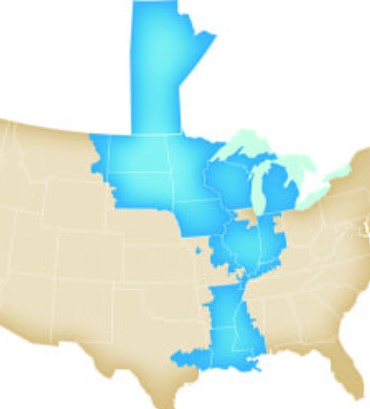
Think of the electrical grid as the world’s largest and most complex machine, and MISO’s job is to keep it running 24/7/365. The grid is operated with some market-like elements with the goal of matching supply and demand second-by-second, throughout the day and night.
Here is the load shape for Thursday, June 23, 2022. It’s a typical hot summer day in the Midwest. Load bottoms out around 3 a.m. at about 70,000 megawatts (MW) and is expected to peak just after 4 p.m. at 113,000 MW.
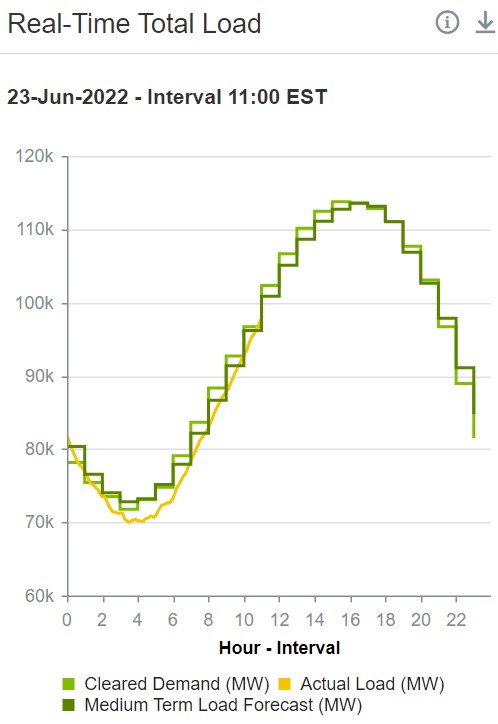
The fuel mix powering the grid at 10:35 in the morning:
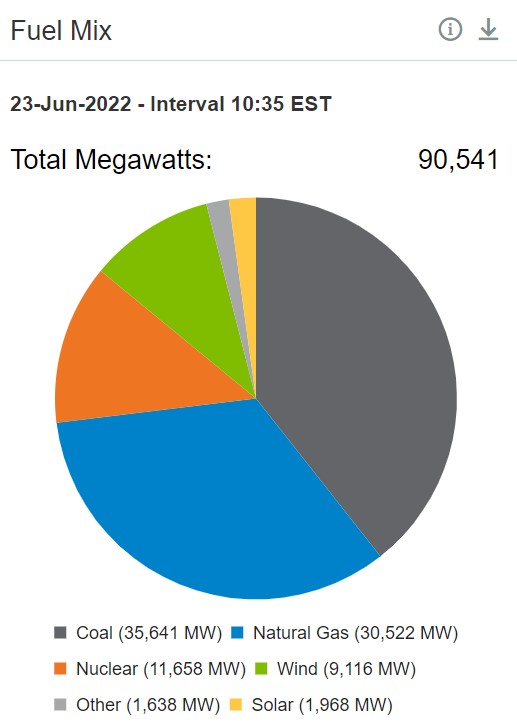
As the region’s load was ramping up mid-morning, passing through the 90,000 MW mark, solar was providing a little over 2 percent, with wind a little over 10 percent of the total. Coal, natural gas, and nuclear were carrying the bulk of the load.
Exactly four hours later, at 2:35 p.m., load in the region has passed through the 105,000 MW threshold, up 17 percent from mid-morning. In terms of total output, every fuel category was contributing more MW than four hours before.

Output from solar was slightly up from this morning, but the share of the total output for solar has dropped below 2 percent.
Thanks to the vagaries of today’s weather, the share of wind has increased from 10 percent to 12 percent.
As the day heats up, however energy planners can’t make the wind blow harder or the sun shine brighter. Adding more wind and solar capacity does not change the ability of those sources to follow load.
From this morning, natural gas has almost caught up with coal as the single largest source of power on the grid. Natural gas is the most flexible fuel and acts as the swing resource that grid operators must rely on to match energy supply and demand in real time.
In four hours, the output of wind has gone up nearly 3,000 MW. But the output of natural gas-power has had to increase 6,000 in four hours to keep up with demand.
Exactly one hour later (at 3:35 p.m.) the load has climbed above 107,000 MW. But as we enter late afternoon, output from wind and solar have begun to fall. With demand still increasing, it’s coal to the rescue this hour:

At 4:35 p.m., load continues to inch upwards, by another 500 MW, even as wind and solar output keeps dropping. Coal and natural gas have to cover the difference.
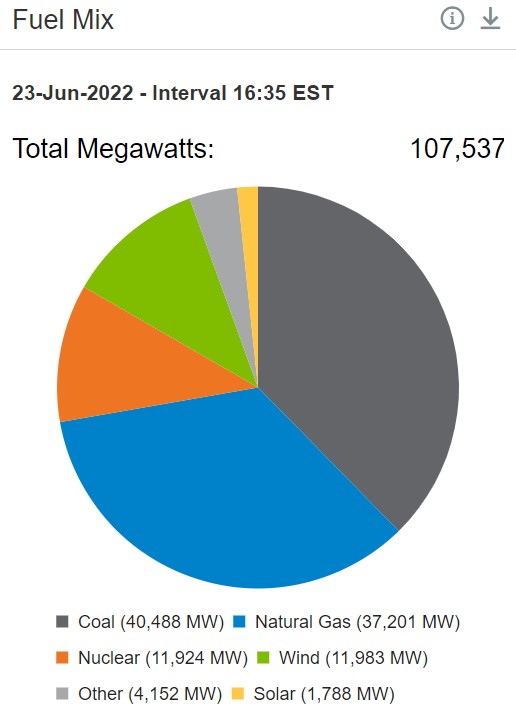
Here is a better view of the grid operator’s challenge, over the course of last week:
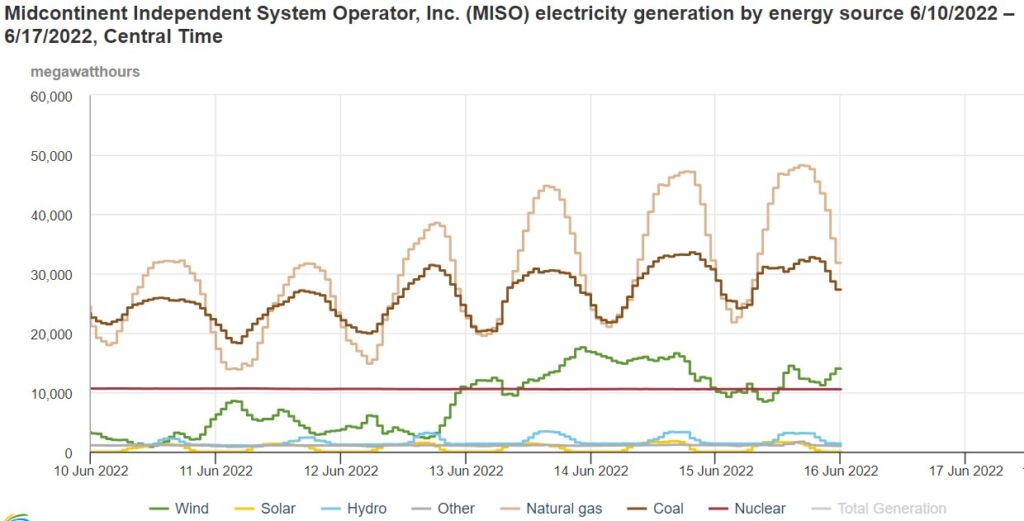
Day after day, hour after hour, nuclear is a straight line. Coal and natural gas swing up and down to follow load, with natural gas having bigger swings. Wind (green line) meanders up and down with a mind of its own.
Some resource has to do the big, predictable swings every day. If not natural gas or coal, then what?
To make up the difference, renewable energy advocates favor more energy storage on the grid, but some fuel has to charge those batteries overnight. At night, the sun doesn’t shine and the wind may or may not blow.